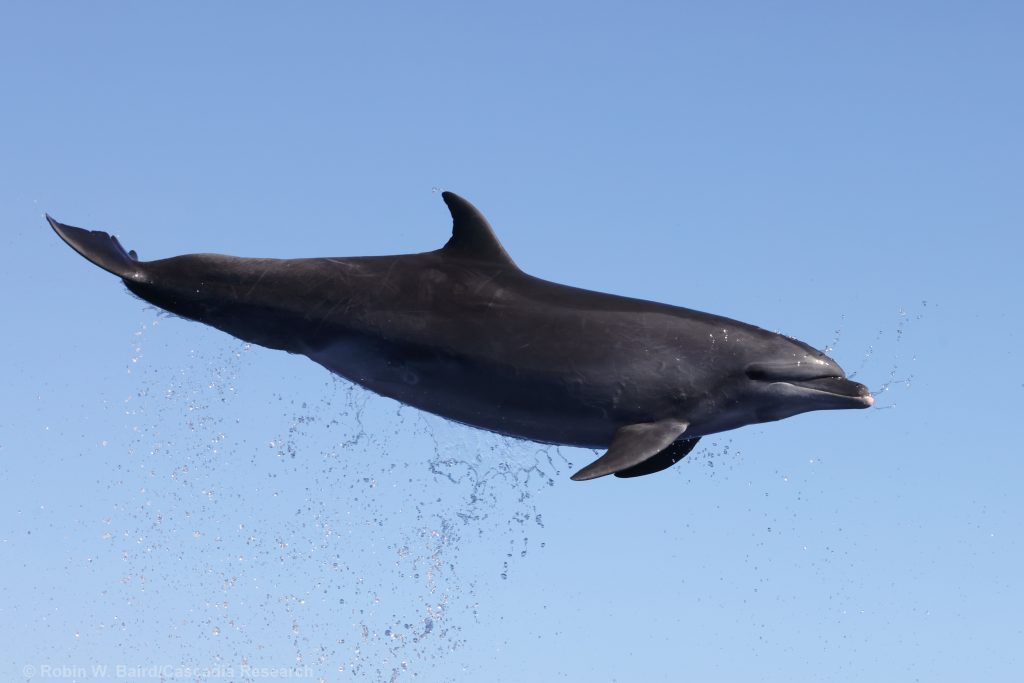
We are undertaking a ~9-day field project off Kaua’i starting on February 11th. This project is funded by the U.S. Navy as part of their Marine Species Monitoring Program and is timed to occur prior to a Submarine Command Course (SCC). Our primary goal is to deploy LIMPET satellite tags on one or more species of odontocete cetaceans prior to the SCC, to be able to examine their behavior before, during, and after the SCC. This approach has been very successful in the past as a way of examining how different species respond to Navy training activities including mid-frequency active sonar (MFAS). If you want to see what we accomplished on our last field project off the island, check out our August 2023 project page.
This is the 16th year we’ve worked off Kaua’i (our first project there was in May and June 2003), our 21th field effort off the island, and the start of the 26th year for this study. In addition to our primary goal, these efforts contribute to our general understanding of what species of whales and dolphins use the area around Kaua’i and Ni’ihau, and photos obtained feed in to our photo-identification catalogs for many different species. Our work off Kaua’i in the past has really benefited by reports of whales or dolphins by local tour operators and fishermen - if you happen to be on the water off Kaua’i between February 11th and 19th and see any pilot whales, false killer whales, melon-headed whales, pygmy killer whales, killer whales, or sperm whales, please call us! If you don't have the cell number of our field crew, contact Robin Baird at "rwbaird" "at" cascadiaresearch.org and we can provide it ahead of time.
Our crew for this project includes Jordan Lerma, Mark Mohler, Jana Phipps, Russ Andrews, Robin Baird, and a number of volunteers.
End of field project update
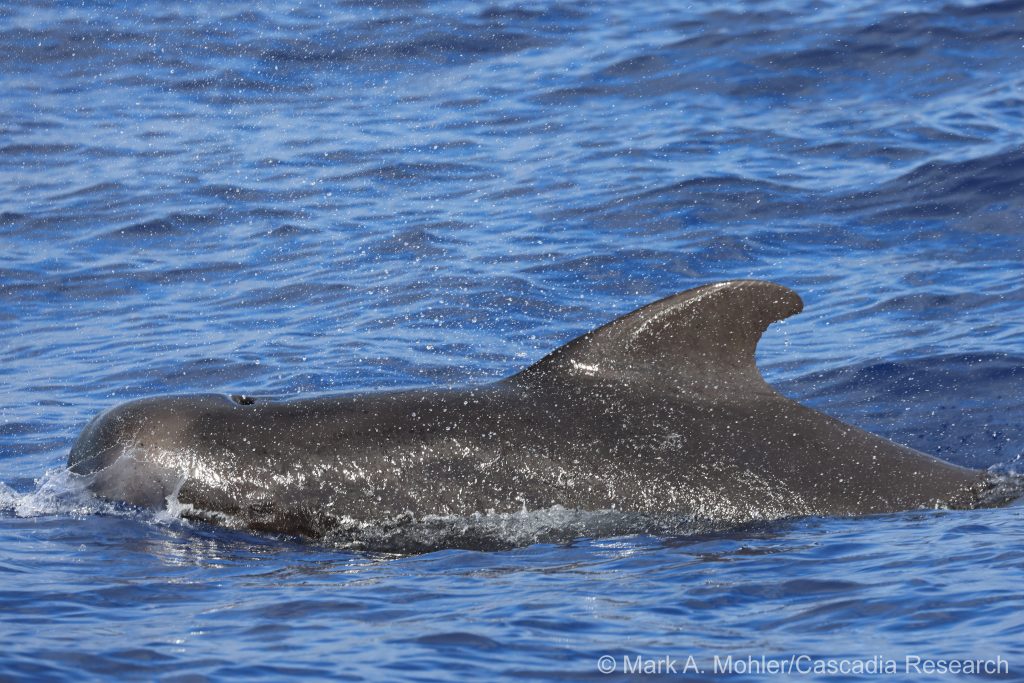
The last few days of our project were quite productive, with encounters with rough-toothed dolphins, bottlenose dolphins, short-finned pilot whales, and humpback whales. We were able to tag three more pilot whales (bringing the total for the trip to eight, on five different groups), two more humpback whales (both in the same competitive group), and a bottlenose dolphin.
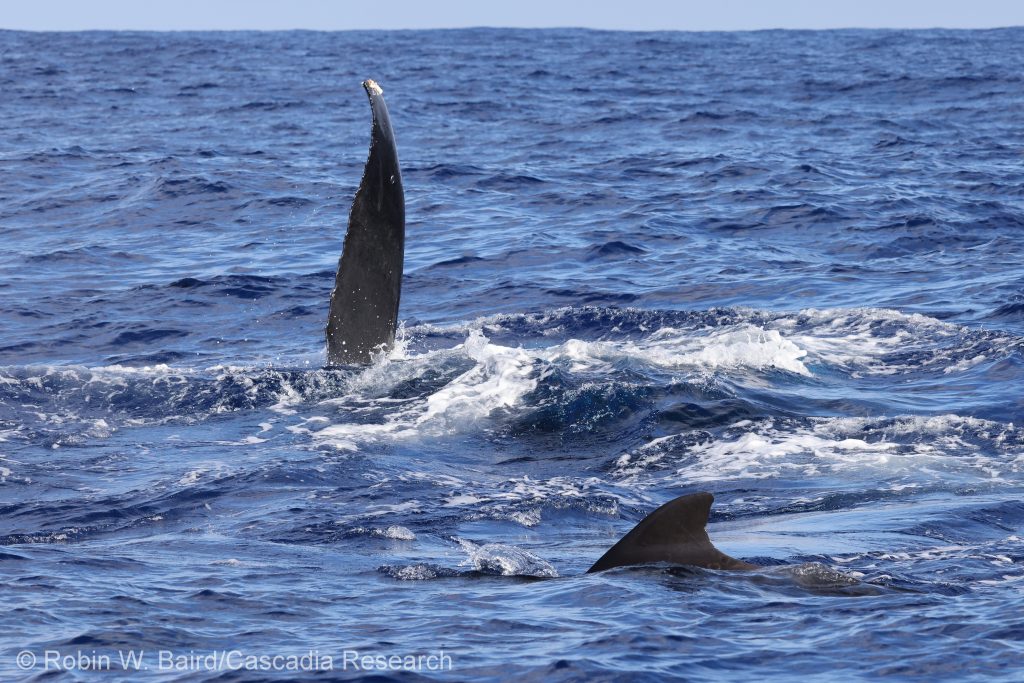
The pilot whale group we encountered on February 19th was interacting with several humpback whales. During our February trips to this island we often see these two species associating - it appears to be a mutual interaction, rather than one species harassing the other.
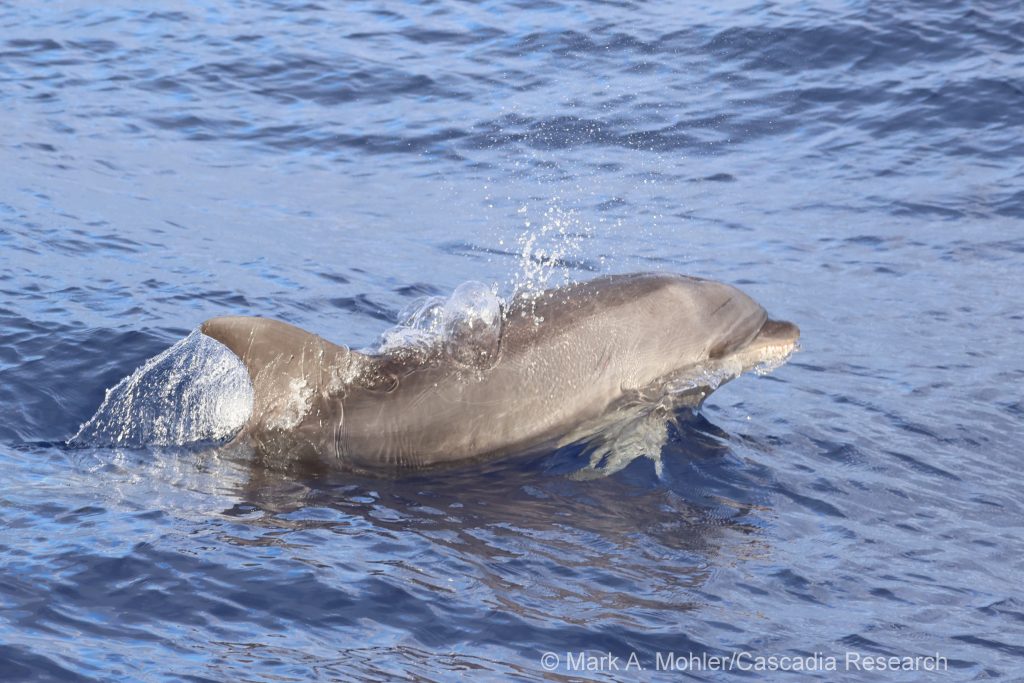
The tag deployed on the individual above was SPLASH10-F tag from Wildlife Computers, the fourth tag we've deployed on bottlenose dolphins in Hawaiʻi that transmit both dive data and Fastloc®-GPS locations, and the 17th with dive data. This individual is HITt1057 in our photo-ID catalog, first documented off Kauaʻi in 2015 and most recently in 2021.
February 16th update
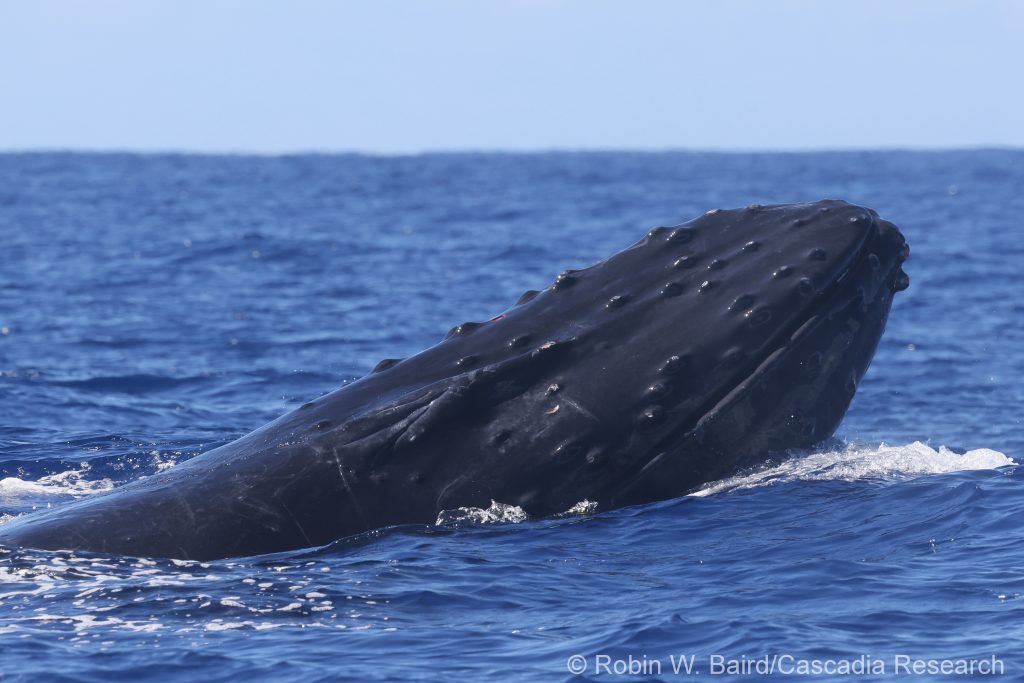
Although odontocetes are the focus of our work, when we are not able to work in deep water offshore we do work with humpback whales in shallower water. Today we encountered a competitive group of humpback whales (in this case four males fighting over a female). In addition to getting fluke ID photos of four whales (which we submit to Happy Whale), we deployed a LIMPET satellite tag, to track movements and behavior, and also collected two biopsy samples.
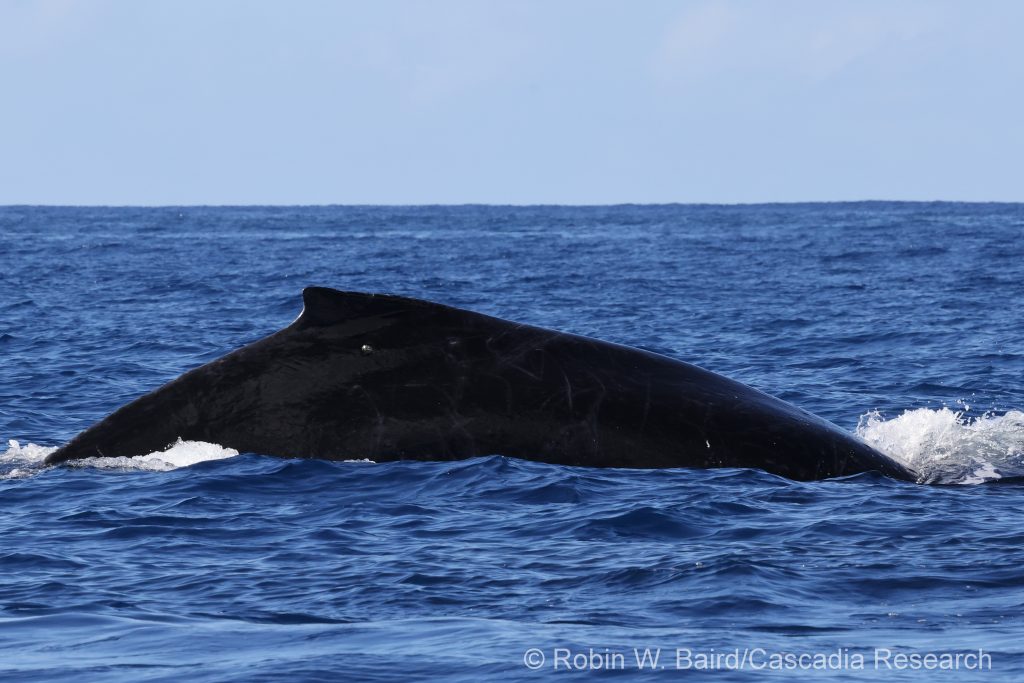
The photo above shows the LIMPET satellite tag just below the dorsal fin of this adult male humpback whale.
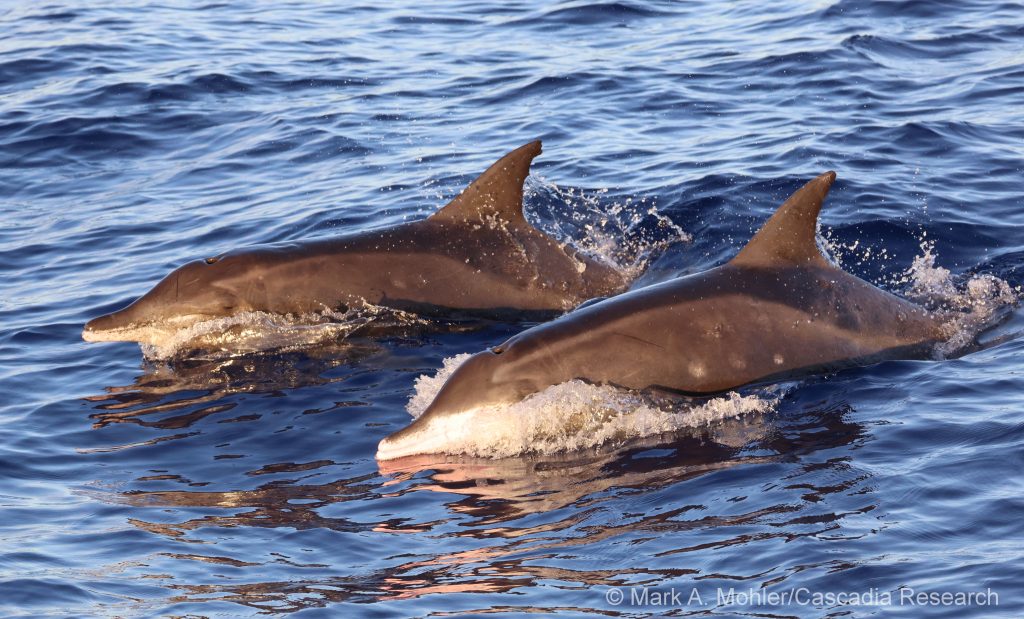
We also had our first encounter with rough-toothed dolphins for the trip! Rough-toothed dolphins are normally our most frequently-encountered species off Kaua'i, so the lack of sightings has been quite unusual. In addition to identification photos of ~4 individuals, we collected one biopsy sample.
February 13th update
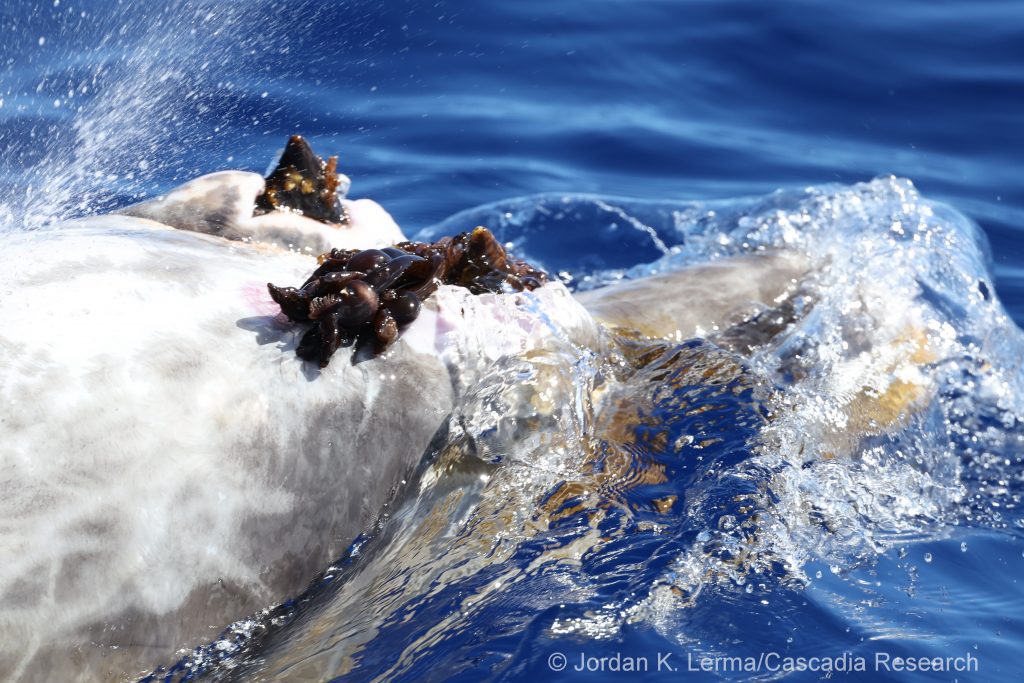
Today we encountered one of our highest-priority species, Blainville's beaked whales! We were directed to the group by acoustic detections picked up on the Navy's hydrophone range, and encountered them after they came up from their long foraging dive. This photo shows a closeup of the head of an adult male, showing the two erupted teeth (dark brown), with a lot of stalked barnacles growing on the right-hand tooth.
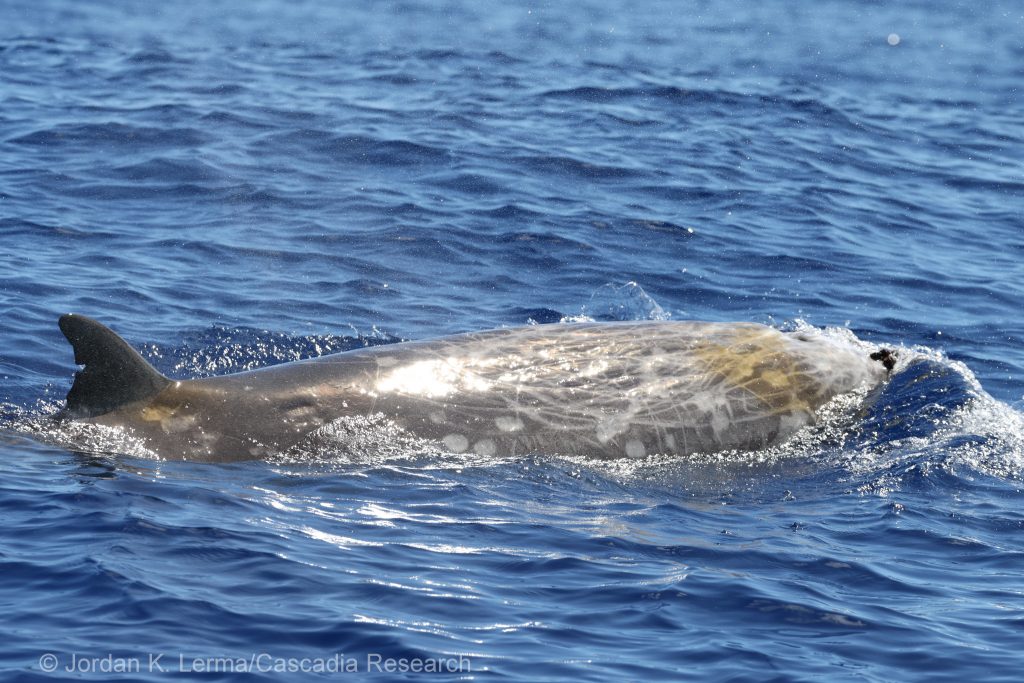 This photo of the same adult male shows the extensive linear scarring found on adult males, caused by fighting with other adult males. The white oval or rectangular scars are healed wounds from cookiecutter shark bites.
This photo of the same adult male shows the extensive linear scarring found on adult males, caused by fighting with other adult males. The white oval or rectangular scars are healed wounds from cookiecutter shark bites.
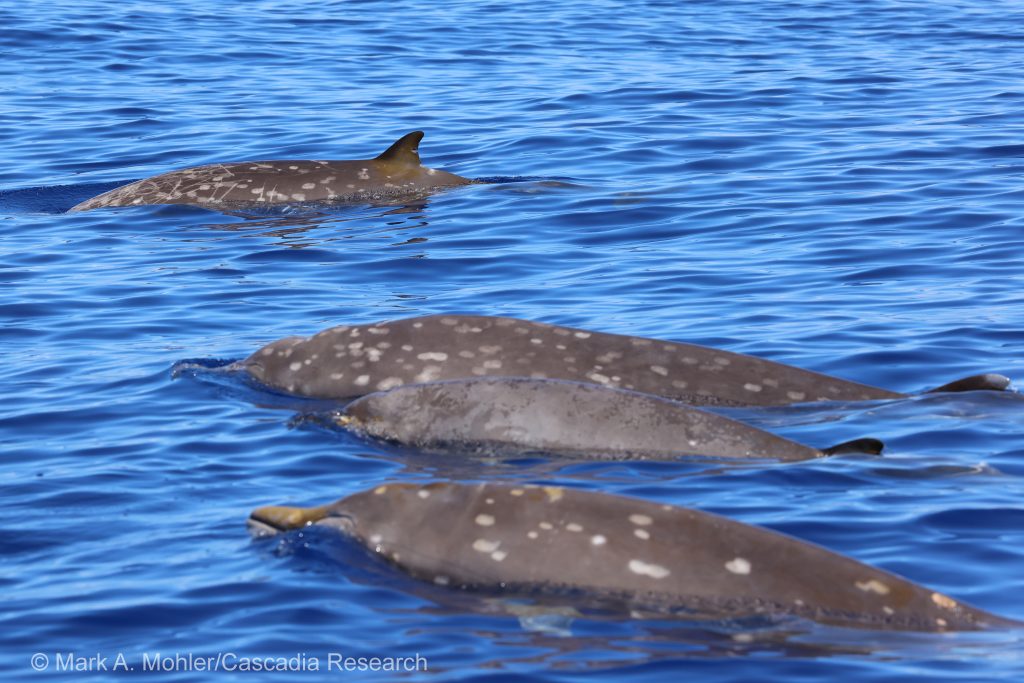
This photo shows four of the five individuals in the group - the closest individual is probably a young adult female, while the pair in the middle are an adult female with calf. We have compared some of the photos to our catalog and have found two matches so far.
February 12th update
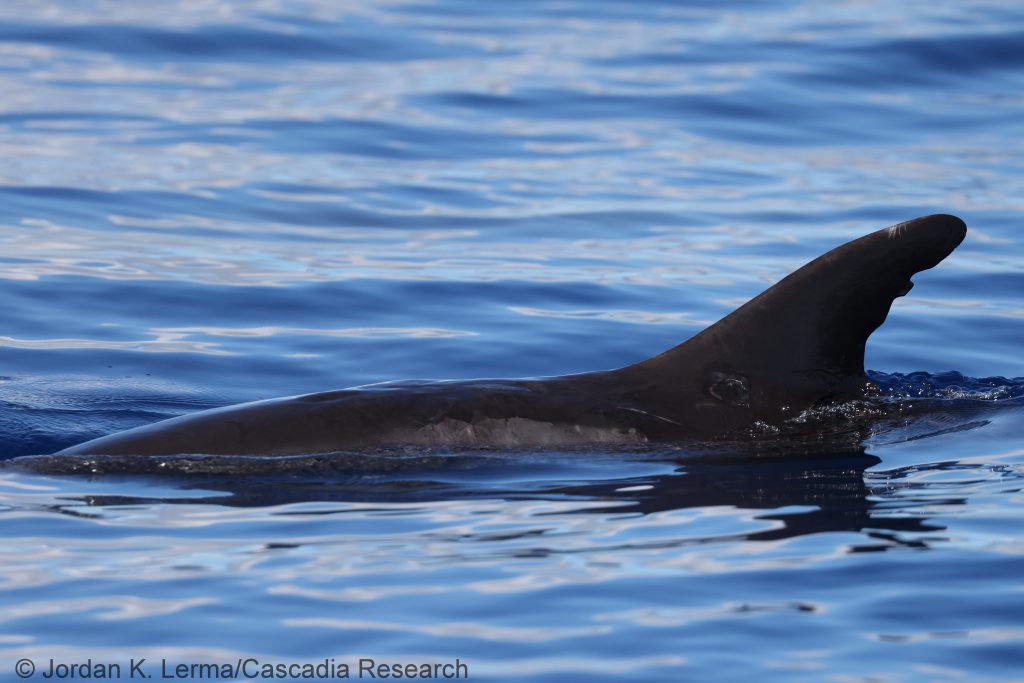
Today the winds shifted to the west, making it impossible to work in our primary study area off the west side. But, this also gave us the opportunity to survey in an area we rarely do, off the east side of the island. Off the northeast corner of the island we encountered a group of pygmy killer whales, only our fourth sighting of this species off Kaua’i or Ni’ihau. We were able to get identification photos of about 20 different individuals, and collected an eDNA sample.
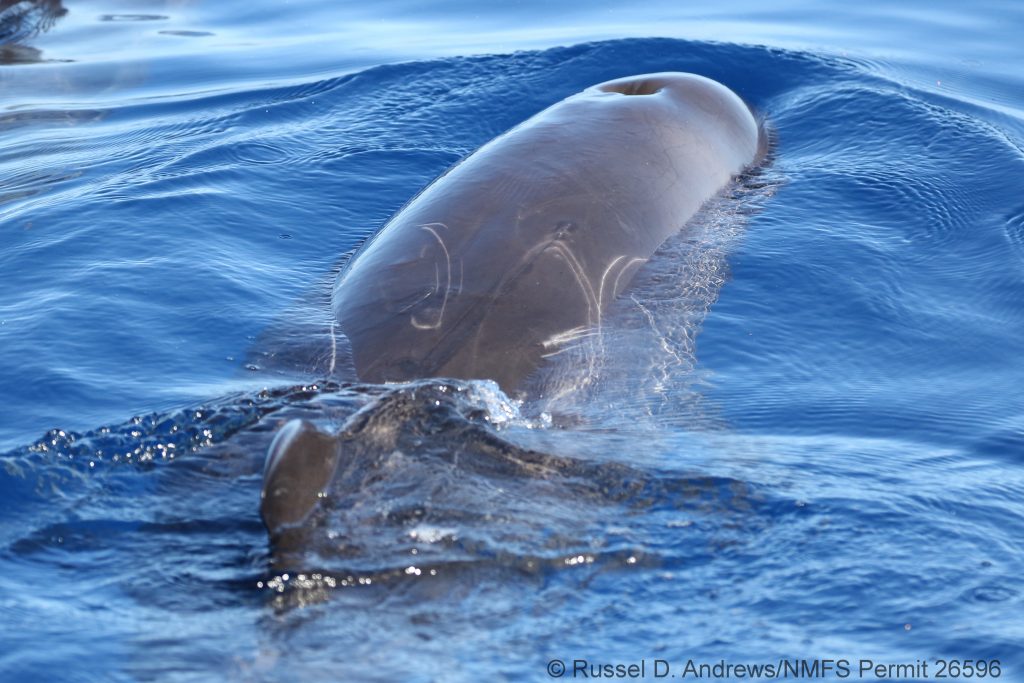
Pygmy killer whales are often confused with melon-headed whales, but one way of telling them apart are the frequent occurrence of parallel white scars.
February 11th update
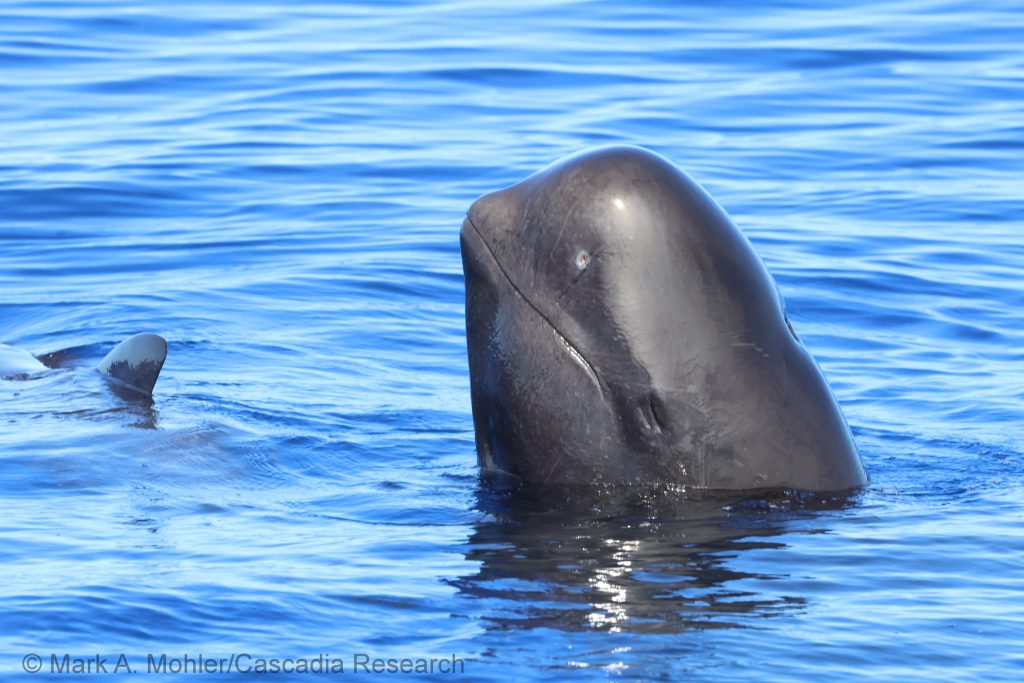
We had calm seas today for our first day on the water, and we were able to cover 189 kilometers off the west side of Kaua’i. With the help of acoustic detections from the Navy's hydrophone range, we were able to encounter three groups of short-finned pilot whales.
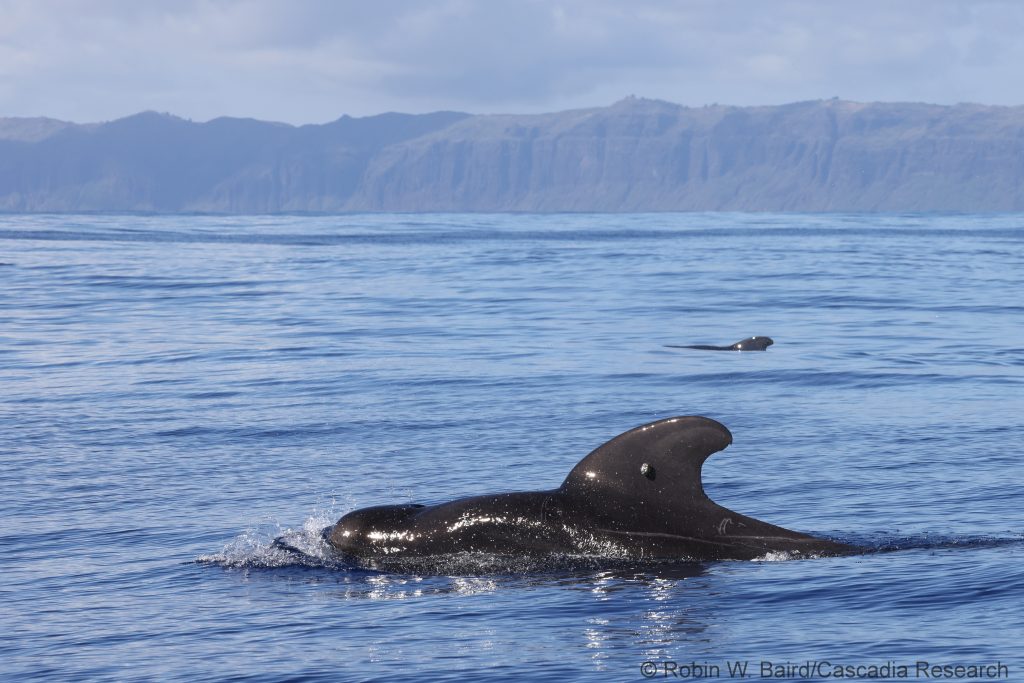
In addition to identification photos of most of the individuals present, we were able to deploy three LIMPET satellite tags. The photo above shows an adult male with one of the tags on the dorsal fin.
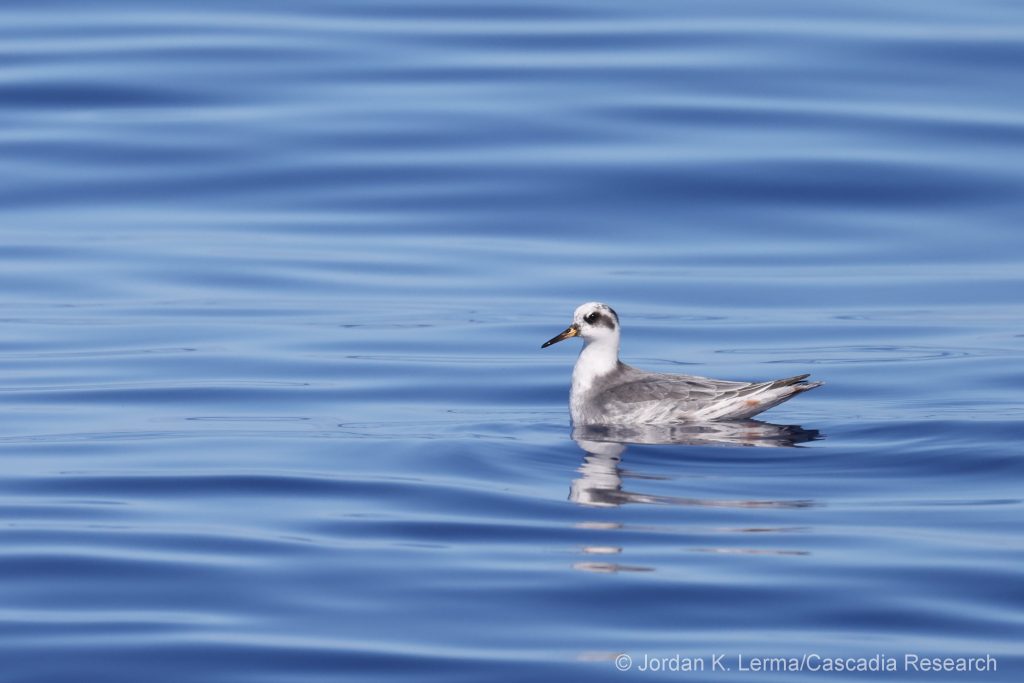
We also record birds on our projects, and today got photos of a Red Phalarope. Red Phalaropes are shorebirds that breed in the Arctic but spend their winters at sea primarily in the tropics.